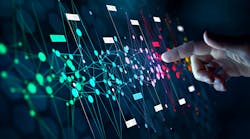In this week’s edition of Voices of the Industry, Robert D. McClary, Senior Vice President and General Manager at FORTRUST, provides his view on how data centers make the world go ’round.
In today’s technologically advanced world, many users underestimate the critical role data centers play in day-to-day activities. In fact, data centers now form the backbone of some of the world’s most important processes, including those related to the Internet, applications and data storage.
Without proper data center support, many of the capabilities that users engage in every day would be inconceivable. Let’s take a look at some of the different ways the data center makes current advancements possible:
E-commerce: Malls replaced by data centers
Just a few short years ago, if someone wanted to make a purchase, they would have to physically travel to the retailer and complete their transaction within a brick-and-mortar store. Nowadays, however, much has changed with the emergence of a robust e-commerce market.
The online shopping sector grows every year, with an increasing number of customers turning to online channels. According to Business Insider, the first quarter of 2014 saw 198 million U.S. consumers partaking in e-commerce, translating to 78 percent of the country’s total population.
In this landscape, it’s not hard to imagine a world where shopping malls are replaced by data centers. Especially during events like Black Friday and Cyber Monday, when countless shoppers flood e-commerce websites with traffic, data center support is imperative to ensuring that these portals and services are continually open for business.
In fact, this environment has already begun to take hold as owners of abandoned shopping malls begin filling their vacant storefronts with something besides physical goods for purchase. According to The Wall Street Journal, empty department stores are now being repurposed for data centers – rooms that were previously filled with racks of clothes and other merchandise are now being filled with servers. For example, one data center operator took over a vacant Target store in Indiana, and a Mississippi-based service provider opened a computing facility in a former McRae’s department store.
And with more shoppers avoiding the stress and complications of brick-and-mortar stores in favor of retailer websites, this trend is sure to continue, making data centers an even more important piece of the puzzle.
The Internet of Things goes mainstream
Another technological trend that depends on data center support is the Internet of Things, or the increasing network of wireless-enabled devices connecting to the Internet. These devices include an array of different items – including Bluetooth-connected home appliances, thermostats, wearable devices and, soon, smart cars. Extreme Networks reported that last year, the IoT was made up of 7 billion connected devices, and is poised to grow to include more than 40 billion by 2020.
The Internet of Things depends on data centers for connectivity and data storage.
The common denominator for all IoT devices is connectivity – users are now able to utilize connected mobile applications to remotely access their appliances, heating and cooling systems or a variety of other items from wherever they are at that moment. This means, for example, that household heads concerned about energy usage can change their thermostat from the palm of their hand.
Not only are data centers instrumental in the connectivity aspect here, but also in storing the vast amounts of data created by these items.
“The issue with all of these connected devices accessing the network is the vast influx of data,” wrote Extreme Networks contributor Brian Clevesy. “The data center is becoming the modern day railroad – it is bridging how we move and store data.”
In this way, data centers are an essential part of the IoT, enabling the necessary data to be stored and transmitted from user applications, to the devices themselves.
Similar to the IoT is the smart city, a growing movement to harness technology to make urban areas more efficient and sustainable. Smart cities will include a whole host of connectivity-dependent devices, including sensors to detect pollution, surveillance equipment to monitor traffic and other systems for oversight and management. Frost & Sullivan forecasted that by 2025, there will be 26 smart cities across the globe, making data centers even more essential for those regions.
While many think of data centers as facilities that only support business applications and the cloud, they have so much more to offer users in today’s technological environment.
Robert D. McClary is Senior Vice President and General Manager, responsible for the overall supervision of business operations, high-profile construction and strategic technical direction at FORTRUST.





